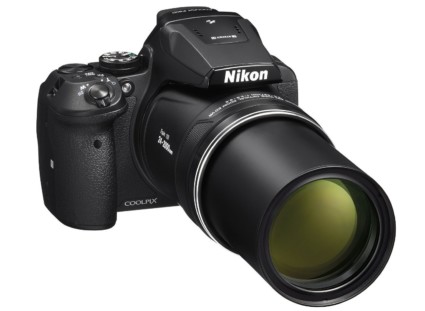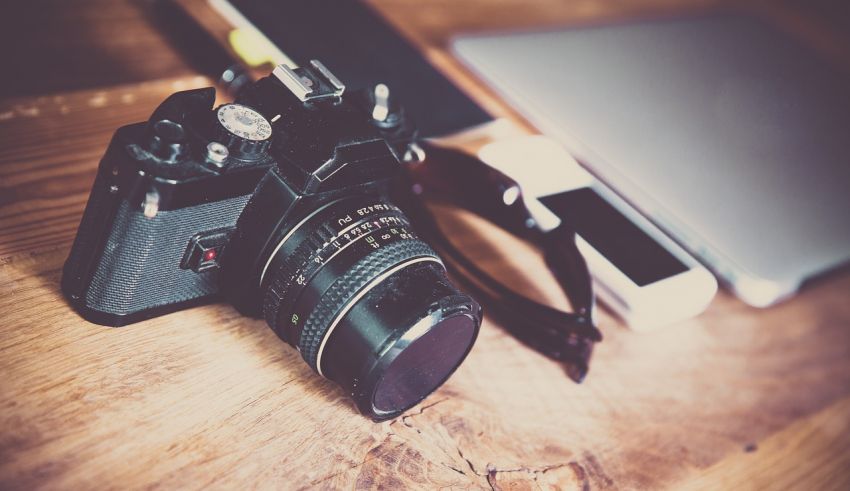
Let’s get it off the chest. Cameras are expensive equipment. You really need to have a deep pocket to buy these fancy stuff. But even if you don’t, there are cameras available (both DSLRs and superzoom point-and-shoots) which can be yours within a reasonable budget.
For instance, Rs.30K is not that high an amount to own a DSLR these days or even a high-end point-and-shoot for that matter. Good cameras below 30000 are still a possibility and I am going to tell you about those in this article.
Since 30000 is a relatively low budget for a DSLR, I have divided this article into two segments.
In the first segment I am going to tell you about the best DSLR cameras under 30K and in the second segment, I am going write about the best point-and-shoot cameras with ultrazoom capability just to kick things up a notch.
When we take photos, we want to be quick and accurate. Cameras that allow you to do this efficiently can be found within here and on websites such as www.productexpert.com. After all, the reason we need these devices is to have them capture the moment, and that’s what we’re paying for
So let’s get started.
Best DSLR Cameras Under 30K to buy one for you in 2022
Nikon D3400 with AF-P DX NIKKOR 18-55 mm f/3.5-5.6G VR Kit 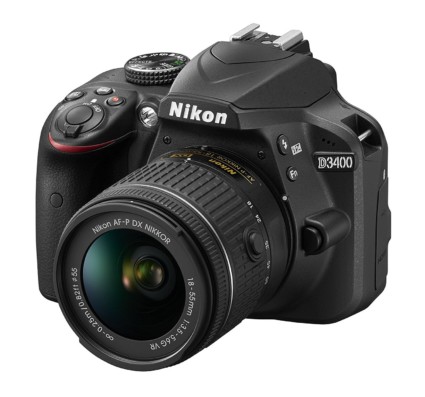
The very latest in Nikon’s entry-level lineup. There’s news floating around this could well be the last of the D3000 series cameras that Nikon will build since the company has now decided to focus more on high-end crop sensor DSLRs as well as full-frame ones. Be that as it may, the Nikon D3400 is definitely a good DSLR for entry-level buyers and photography beginners.
It comes packed with features that would make you happy spending money on it. Although it features the same 24.2 megapixels APS-C CMOS sensor that the earlier D3300 carries, it does feature some important upgrades. Biggest of them all is probably the inclusion of SnapBridge in the camera which would allow you to transfer photos from the camera to your smartphone or desktop through the use of WiFi.
If you are really picky then you might rue the fact that it still does not have a dedicated built-in Wi-Fi feature, but SnapBridge does the job pretty good as well and after all, it’s an entry-level DSLR. You really cannot expect it to have features which are found in the more premium DSLRs.
The Nikon D3400 is typically offered with the AF-P DX NIKKOR 18-55 mm f/3.5-5.6G VR and the AF-P DX NIKKOR 70-300 mm f/4.5 – 6.3G ED VR kit lenses. The lenses are also upgraded over the same lenses in the AF-S series and are only compatible with the Nikon D3300 and Nikon D3400 and other new Nikon models.
These lenses are good, but if you want the D3400 to shell out professional grade images, I suggest you look at buying some other dedicated prime lenses. The kit lenses will do the job for you if you are an amateur, but professional grade photography asks for professional grade lenses.
If you are on a tight budget, I suggest you go for the Nikkor AF-S 50mm f/1.8G, or if you really can spend a bit more I suggest you go for the new Nikon AF-S NIKKOR 105mm f/1.4E ED Lens.Both these prime lenses are superbly hot and produce really professional grade photos.
Pros:
- A great 24.2-megapixel sensor
- High ISO range
- SnapBridge
- Nice and compact design
- Good kit lenses
Cons:
- No WiFi
- No touchscreen
- No tilt screen
- Not 4K Capable
Verdict:
The Nikon D3300 is meant for beginners and is probably the best entry-level DSLR available today in the market. So if you are looking for a DSLR under Rs.30000 then I the D3400 is a sure shot winner.
[ryvl video_url=”https://www.reviewsxp.com/blog/nikon-d3400-review” auto_play=”yes”]Read Nikon D3400 Detailed Review[/ryvl]
Nikon D3300 with AF-P DX NIKKOR 18-55 mm f/3.5-5.6G VR Kit 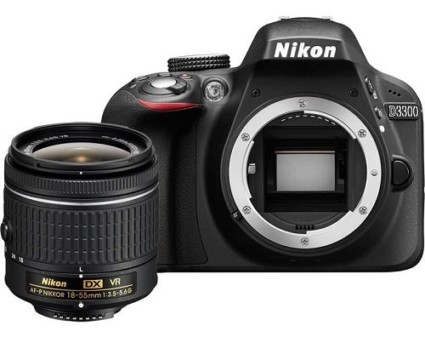
Pretty much the same stuff as the D3400 with a bit less of the modern tech and at a lower price. The Nikon D3300 is as much as good entry-level DSLR as they have ever made. It has the same 24.2-megapixel sensor that you see on the D3400 and the same ISO range. Design and build of both the cameras are also pretty same. It’s lighter in weight and more compact in size compared the one it replaced i.e. Nikon D3200.
Just like the Nikon D3400, the D3300 is also offered in India with two kit lenses – AF-P DX NIKKOR 18-55 mm f/3.5-5.6G VR and the AF-P DX NIKKOR 70-300 mm f/4.5 – 6.3G ED VR kit lenses. If you buy the camera with both these lenses then the price would go upwards of the price bracket we are discussing here. But just buy the standard 18-55mm kit lens and you would get yourself a pretty sweet deal under Rs.30K.
As far as performance is concerned, the Nikon D3300 ticks almost all the boxes for an entry-level DSLR. Image quality is very good and paired with a good prime, it gets even better. Of course, don’t expect it to deliver full-frame like images. It’s an entry-level crop sensor DSLR after all, but I would definitely leave exchange my D7000 for a D3300 any day simply because of that 24.2-megapixel sensor.
Pros:
- Great image sensor
- Good noise performance
- Relatively low price
- Good design and build
- Good image quality
Cons:
- The absence of SnapBridge, WiFi
- Absence of touchscreen
- Absence of 4K
Verdict:
Perfect for photography beginners, the Nikon D3300 can be your all-weather friend and really help you to learn the tips and tricks of DSLR photography in a much better way. So if you want to buy one, there is no reason why you shouldn’t.
[ryvl video_url=”https://www.reviewsxp.com/blog/nikon-d3300-review” auto_play=”yes”]Read Nikon D3300 Detailed Review[/ryvl]
Canon 1300D with EF-S 18-55 IS II Lens 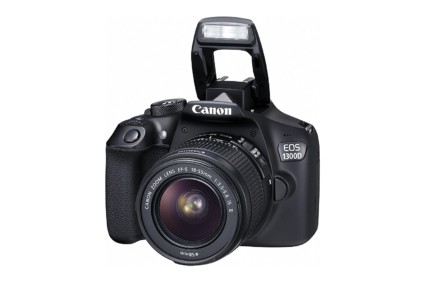
How can we talk about DSLRs and talk about Nikon without really coming across its great rival Canon? Who is better? Nikon or Canon? This question has been dogging photographers and camera users across the world since the time these two photographic behemoths came into existence. It has never been easy to answer this question. But as things stand today, I can say with some bit of confidence that Nikon does have an edge over Canon in this segment at least.
No, I do not by any way mean that the Canon 1300D is a bad camera. It’s a very good entry-level DSLR, but just not up to the scratch when we compare it to the earlier mentioned two. But a Nikon vs. Canon comparison is NOT what we are doing here. So let’s take a look at what the Canon 1300D offers. The 1300D comes with an 18 megapixel APS-C CMOS sensor and a native ISO range of 6400 which can further be expanded up to 12800. It has 9 autofocus points which are grouped towards the center of the screen and a viewfinder which covers 95% of the scene.
Just like Nikon cameras, the Canon 1300D is also offered with two standard kit lenses – EF-S 18-55 mm IS II and EF-S 55-250 mm F4 5.6 IS II. Both these lenses are good as far as kit lenses go, but not without their limitations. If you plan professional shoots with these two lenses then you better watch out since image quality is not that great. I suggest you buy Canon’s version of nifty-fifty and pair with the 1300D. It works out pretty well. If you can afford then the EF 85 mm f/1.8 USM lens goes really well with it.
The 1300D comes with built-in Wi-Fi and NFC. Something you won’t find in Nikon’s entry-level DSLRs. When it comes to performance, the Canon 1300D does fairly well. Autofocusing is fairly quick in good lighting conditions, and paired with a good lens quality of images are also pretty good. That’s why I would suggest you buy something other than a kit lens when you are purchasing the Canon 1300D. But the area where the 1300D lags far behind its competitors is noise performance. Images shot above 1600 ISO are almost unusable.
Pros:
- Good design and build
- Built-in WiFi and NFC
- Low price
- Good AF performance
Cons:
- Bad noise performance
- Pretty average image quality with kit lenses
- Low megapixel count of the sensor
- No 4K
Verdict:
In spite of having a few profound drawbacks, I feel the Canon 1300D is good for entry-level DSLR users. If you want to use Canon and really have a soft corner for everything Canon then go for this one. Otherwise, in the entry-level segment, Nikon cameras are a bit better.
[ryvl video_url=”https://www.youtube.com/watch?v=AXuM7mw9gyg” auto_play=”yes”]Watch full Review of Canon 1300D[/ryvl]
Ultrazoom Point-and-Shooters under 30K
Sony DSC-RX100 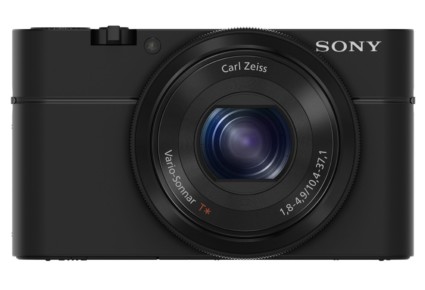
With only 3.2x optical and 14x digital zoom, the Sony Cybershot DSC-RX100 is no zoom monster. But boy it packs a punch when it comes to image quality and performance. The camera is feature rich and that’s why it carries that close to the 30K price tag. The biggest premium feature of the RX100 is that 28-100mm Carl Zeiss Vario-Sonnar T* zoom lens with a fast aperture of F1.8 at the wide-angle setting. This lens is primarily responsible for the tack sharp images that the RX100 produces along with the 20.9 1.0-type Exmor CMOS image sensor. The camera can also record videos at full HD (1080P).
As I have said at the very outset, the biggest plus point of the Sony RX100 is its image quality and dare I say that in certain lighting conditions, the images produced by the RX100 are better than entry-level DSLRs. When it comes to design, the RX100 is built like a compact point and shooter and can easily fit in your pocket. Handling it is extremely easy with a well laid out menu and easy to reach buttons. The only missable feature in the camera is probably the viewfinder.
When it comes to noise performance, the RX100 does hold its ground till ISO 1600. But after that, images tend to become noisy and after 6400 ISO they become almost unusable. Chromatic aberrations can also be seen in images but they are within the control and can easily be tackled if you have good editing skills.
Noticeable misses in the RX100 are the absence of an articulating screen and absence of a hot-shoe for external flash.
Pros:
- Tack sharp images
- Awesome 28-100mm Carl Zeiss Vario-Sonnar T* zoom lens
- HD recording
- 10 shots per second Burst Mode. This is pretty damn fast for a point-and-shooter
- Good battery backup
- Excellent AF performance
Cons:
- No viewfinder
- No hot-shoe
- No articulating screen
- No 4K
Verdict:
If you don’t have a requirement for high zoom, then the Sony Cybershot RX100 is a perfect camera for you. You won’t get this kind of image quality in any other point-and-shoot camera at this price range.
[ryvl video_url=”https://www.youtube.com/watch?v=BmEbcxNUY6U” auto_play=”yes”]Watch Nikon D3300 Detailed Review[/ryvl]
Nikon P900
Recently a point-and-shoot was used to click pictures of the International Space Station (ISS) from the earth and that camera was none other than the Nikon Coolpix P900. It was possible thanks to its gigantic 83X optical zoom which caught the ISS while it was passing in from of the moon. Let’s put its zoom range in perspective. Professional photographers use a mostly 600mm lens to capture birds or other objects from a distance. Most people do not go above that zoom length because those telephoto lenses are damn costly. If someone has the money to buy it then they go for 800mm lenses at most. But the Nikon P900 at its full 83X zoom gives you a capability equivalent to 2000mm, which is simply mind-boggling and it starts out at an ultra-wide 24mm. So effective range of the Nikon P900 is 24-2000mm. With a digital zoom, it increases to 4000mm. That’s something.
While all this ultrazoom capability is good, there is one crucial area where the P900 suffers and that is image quality. The more you zoom in, more the quality of images suffers. At lower zooms, the camera produces fairly good images thanks to its 16-megapixel CMOS sensor. The camera also boasts of built-in WiFi and GPS as well as a rotating screen for shooting tough angles.
Pros:
- 83x zoom
- Ultra wide angle lens
- Built-in WiFi and GPS
- Full HD recording at 1080p
Cons:
- Image quality at high zoom not up to the mark
- No RAW support
Verdict:
If you are someone who likes to shoot the moon then the Nikon P900 is a perfect choice for you. I am just waiting for the day when it comes to RAW and I will happily ditch my DSLR and buy this one. Who wants to spend a huge amount on buying lenses after all?
[ryvl video_url=”https://www.reviewsxp.com/blog/nikon-coolpix-p900-review” auto_play=”yes”]Read Nikon P900 Detailed Review [/ryvl]
Sony DSC-HX400V 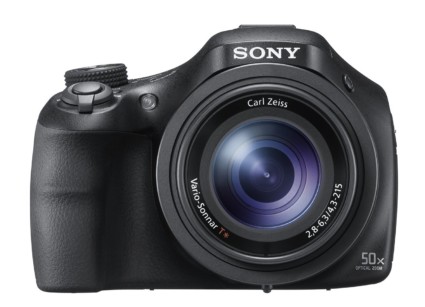
50x optical and a hopping 540x digital zoom, 20.4 megapixel CMOS sensor and DSLR like shooting options – you get all these with the Sony DSC-HX400V. Other notable features of the HX400V includes built-in WiFi and NFC, built-in GPS, full HD recording at 1920P, high-speed AF and a 3-inch tilting LCD screen. Yes the Sony HX400V is packed with features for a point and shoot at this price range. If you can stop drooling over the Nikon P900’s zoom range and focus more on performance then the HX400V is something you should surely look at.
Design and build of the GX400V are of premium quality with a black matte finish and DSLR like buttons and controls. Since point and shoots are mostly used by amateurs, there is something called ‘SteadyShot’ built into the camera which acts as an inbuilt image stabilization. A Carl Zeiss Vario Sonnar T* f/2.8 lens provides tack sharp images on most lighting conditions.
Pros:
- Manual focusing and manual exposure
- Built-in WiFi, NFC, and GPS
- Built-in IS
- Electronic viewfinder
- Articulating screen
- 0 fps continuous shooting. Pretty damn fast for a point and shoot camera
- 50x optical and 540x digital zoom
- AE bracketing
- Panoramic mode
Cons:
- No RAW
- No face detection. Glaring miss for a point and shoot camera
- No touchscreen
- No weather sealing
Verdict:
An excellent point and shoot camera for the price with realistic and premium features, good image quality and optimum performance.
[ryvl video_url=”https://www.youtube.com/watch?v=BmEbcxNUY6U” auto_play=”yes”]Watch full Review of Sony DSC-HX400V [/ryvl]
Canon Powershot SX60 HS 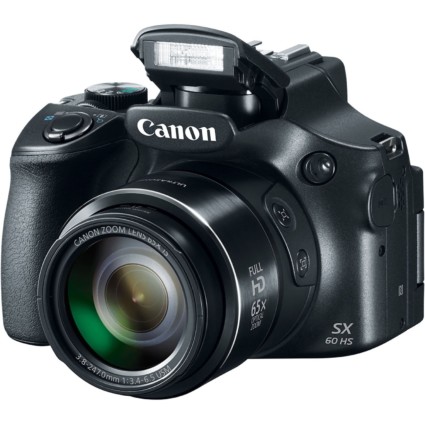
With a massive 65x optical zoom, the SX60HS is Canon’s entry into this super exclusive ultrazoom camera club. The SX60HS is a bit old in terms of the date it was launched, but even today the camera is doing good because of its performance and the features it offers. The SX60HS comes fitted with a 16-megapixel CMOS sensor, a 3-inch LCD screen, built-in WiFi and NFC. It’s definitely a good camera, but it does have some glaring misses. For instance, image quality on the Canon SX60HS deteriorates as you zoom into your subject. So at 65x, the images become unstoppable (if the subject is small) because of low pixel count of the sensor. But at wider angles, the camera produces pretty good images.
A dynamic range of the camera is also not good since, in high contrast situations, the shadow areas tend to lose details. Noise performance of the camera is also not up to the mark. Images take at and up to ISO 800 are pretty good, but anything above that is better avoided.
Pros:
- High zoom
- Built-in WiFi and NFC
- Good build and design
- Decent handling
Cons:
- Average image quality
- Poor AF performance in low light
- NO EVF proximity sensor
Verdict:
Although the SX60HS is a good point and shoot camera, it is an older Canon model and there are better options available today in the market at this price range.
[ryvl video_url=”https://www.reviewsxp.com/blog/canon-powershot-sx60-hs-review/”yes”]Read Canon Powershot SX60 HS Detailed Review [/ryvl]
So that’s it. These are the best cameras available today in the market for an under Rs.30000.If you know of any other cameras that you think should make this list, do let us know.
